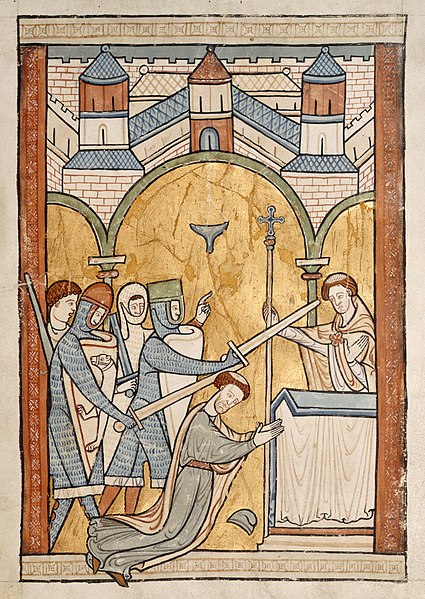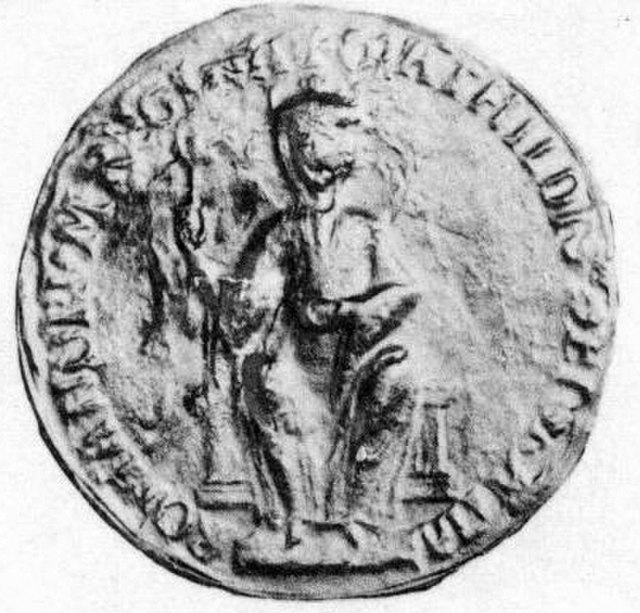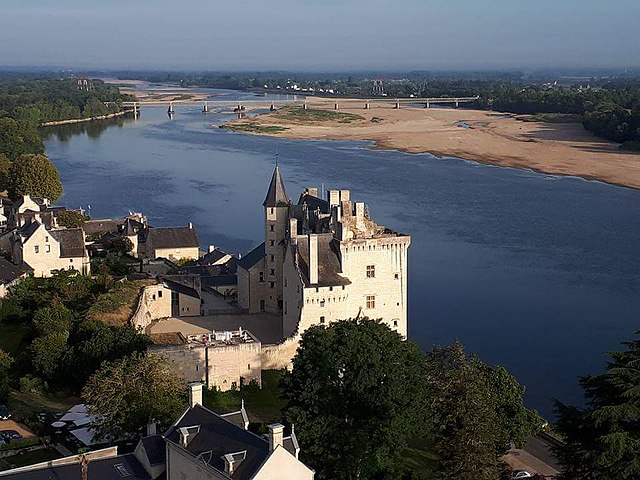Thomas Becket, also known as Saint Thomas of Canterbury, Thomas of London and later Thomas à Becket, served as Lord Chancellor from 1155 to 1162, and then notably as Archbishop of Canterbury from 1162 until his death in 1170. He engaged in conflict with Henry II, King of England, over the rights and privileges of the Church and was murdered by followers of the King in Canterbury Cathedral. Soon after his death, he was canonised by Pope Alexander III. He is venerated as a saint and martyr by the Catholic Church and the Anglican Communion.
One of the earliest known depictions of Becket's assassination, c. 1175–1225
Plaque marking Becket's birthplace on Cheapside in London
14th-century depiction of Becket with King Henry II
A Seal of the Abbot of Arbroath, showing the murder of Becket. Arbroath Abbey was founded 8 years after the death of St Thomas and dedicated to him; it became the wealthiest abbey in Scotland.
Henry II, also known as Henry Fitzempress and Henry Curtmantle, was King of England from 1154 until his death in 1189. During his reign he controlled England, substantial parts of Wales and Ireland, and much of France, an area that altogether was later called the Angevin Empire, and also held power over Scotland and the Duchy of Brittany.
Contemporary depiction of Henry from the Gospels of Henry the Lion, c. 1175–1188
The great seal of Empress Matilda
The capture of Montsoreau Castle, next to the River Loire, in 1152 marked the end of the revolt organised by Geoffrey against his brother.
12th-century depiction of Henry and Eleanor of Aquitaine holding court








